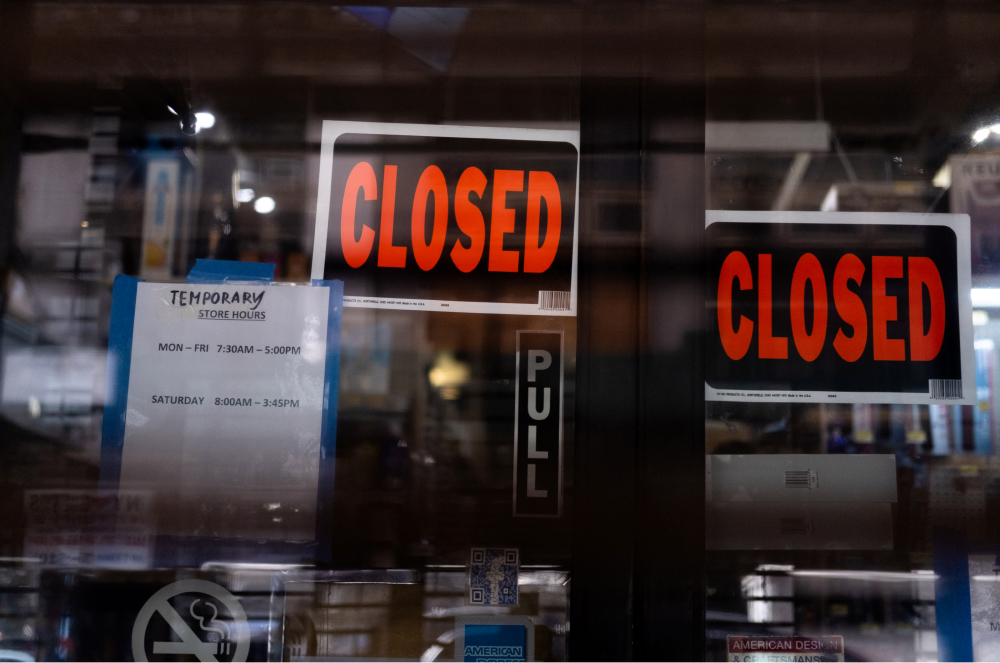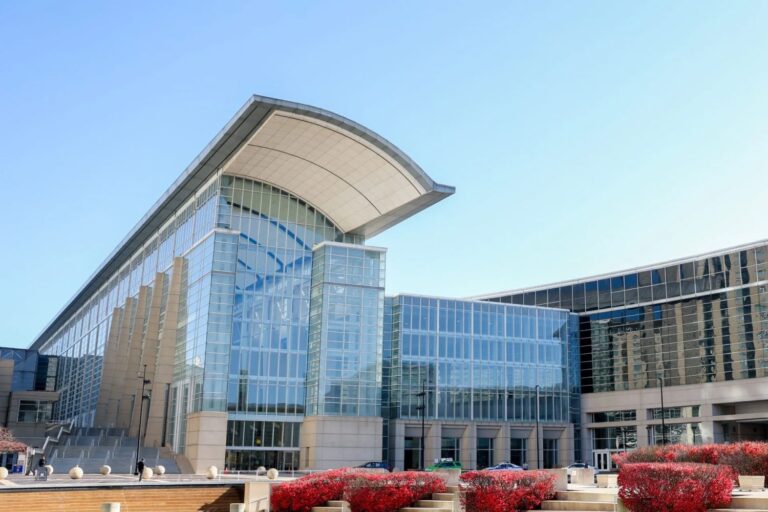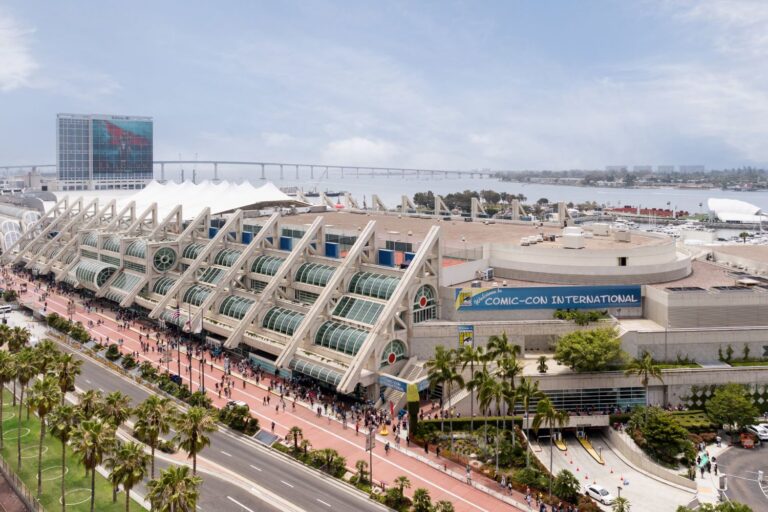Leveraging Technology for Reengineering Restaurant Operation in Uncertainty!
Beyond any doubt, the restaurant industry is a tough business to operate, even in the best of times: approximately 60 percent fail within their first year and around 80 percent within their first five. And actually, several reasons stay behind such a high failure rate, which range from changing consumer preferences, thin margins in the best of times, a workforce with a high turnover rate, the wrong location to a poor digital experience for consumers in the era of smartphones and food apps.
Over the past four months, there exists another “bona fide” reason: the abrupt lack of consumer demand brought about by a global outbreak of COVID-19, the disease caused by the coronavirus. The pandemics has forced the shuttering of restaurant dine-in establishments in many states and also resulted in a work-from-home workforce that has all but eliminated the lunchtime crowd for traditional restaurants and quick-service restaurants.
To tackle these challenging hurdles, especially in the troubled times, it’s a “must” to figure out a long-lasting solution that can mitigate all the restaurant industry uncertainties. This is where technology comes into play! As a restaurant owner, you’d better off “reengineering” your business operation by leveraging technology in order to address the growing concern of economic uncertainty and chronic financial pressures.
The Coronavirus Outbreak & Its Withering Impacts on The Restaurant Industry
Before diving into the particulars of technology adoption into restaurant operation, it’s crucial to first take a look over how COVID-19 has brutalized the American restaurant landscape over the past months of 2020!
January to February: Lost of Taste for Chinese Food
It is commonly believed that the first COVID-19 outbreak did occur in Wuhan, China – which, throughout January and February, became the “epicenter” of the soon-to-be pandemic. Since awareness of this novel coronavirus as well as its likely origin grew rapidly, in a xenophobic reaction to the outbreak, several Americans stopped dining at Chinese restaurants, resulting in many across the country to report steep declines in business – and even some have since closed.
Typically, around the Lunar New Year, there’s an uptick in Yelp searches for Chinese restaurants – particularly in the last year of 2019, there was around 56 percent boost in Yelp searches on the first day of the Lunar New Year compared to the two weeks prior. This year, nonetheless, the figure stood around only 38 percent, while in Chicago and Manhattan there was an actual decrease.
Then, during the first three weeks of February, Chinese restaurants’ share of daily restaurant “connections” – things such as phone calls, website clicks, delivery orders, and reviews – dropped about 20 percent. After that, there was a growing sentiment of “patronizing” echoed throughout the country, including some politicians and celebrities taking to social media to convince people to visit their local Chinatowns – yet, data revealed ongoing declines in business throughout February.

Then, ironically, what seems to have re-stoked the appetite for Chinese food was the wave of social distancing that began moving across the country as people started avoided public gatherings and became dependent on takeout and delivery. Remarkably, American interest in Chinese cuisine skyrocketed, while interest in other, less-takeout-friendly cuisines – such as traditional American, Japanese, and Italian – gradually sank.
February to Early March: Cancellation of Dinner Plans
According to Foursquare, visits to casual dining restaurant chains are down as people distance themselves socially, dining at home rather than going out to eat. Nationally, casual dining chains’ foot traffic is down 11% from the week ending February 19 to the week ending March 13. The four cities in the study – New York, Seattle, Los Angeles, San Francisco – witnessed a decline from 8% to 12% in visits around February 24. Then, foot traffic remained fairly stable in San Francisco, Los Angeles, and New York City from February 24 to March 8. Yet, around March 11, restaurant visits began declining again, perhaps indicating cities will continue to see further declines as the pandemic grows.

Not surprisingly, almost all full-service restaurant reservations saw a sharp drop. Based on a report by reservation app OpenTable, reservations in Seattle fell down 31 percent by March 3 compared to the previous year while those of San Francisco city also saw a decline of 24 percent. Over the following week, reservations continued to plummet when Seattle and the Bay Area city experienced a 49 percent and 43 percent decline, respectively.
Also, at that point in time, every city with 50 or more restaurants using OpenTable suffered reservation declines since people increasingly stayed home. By March 8, several states, including Washington, California, and Florida – where some of the first novel coronavirus deaths occurred – had declared a state of emergency.

On March 11, Resy, a reservations booking platform, sent an email to restaurant clients warning them: “All restaurants should anticipate very significant cover and revenue declines in April and May,” – Resy’s CEO Ben Leventhal wrote to restaurant clients on Wednesday afternoon.
It was clearly explained in the email that at the start of the month, Seattle reservations were a third lower than normal. Cancellations in the city spiked past 13 percent, similar to levels seen during Seattle’s record-breaking blizzards in 2019. Meanwhile, in New York City, March restaurant cancellations were 45 percent higher than last year.
“Immediately, restaurants should consider aggressive over-booking to combat the anticipated spike in cancellations and decline in walk-ins,” the email said, days before cities around the country would begin shutting down restaurant dining rooms.
Early March: Preference for Grocery Over Takeout
In the second week of March, the World Health Organization officially classified COVID-19 as a pandemic, and the United States announced to close its borders to most of the European countries. Since pleas for people to self-quarantine and practice “social distancing” filled screens, many Americans stopped going to restaurants almost entirely, preparing to be on self-quarantine and cook for themselves.
During that week, Apptopia, an analytics company that tracks daily downloads of mobile apps, saw huge boosts in grocery delivery app downloads. To be more precise, downloads for grocery delivery app Instacart grew up 215 percent between February 14 and March 15. Then, on the weekend following Coronavirus’s designation as a pandemic, Instacart downloads spiked around 50 percent while downloads for Walmart’s grocery app also rose up to 45 percent.

Furthermore, since all cities prepared to enforce social distancing, people rushed to grocery stores to stock up. In fact, according to Foursquare, foot visits to bulk-buy grocery stores like Sam’s Club and Costco were up nearly 39 percent in New York City, Seattle, San Francisco, and Los Angeles from the week of February 19 to the week of March 13. Additionally, Yelp experienced a 160 percent increase in interest for grocery stores from March 8 to March 18 – among other spikes in interests for produce and takeout – over dine-in services.
Another noteworthy trend is that when faced with the demand of cooking for themselves for an extended period of time, Americans have turned to some technology platforms to figure out common concerns – such as how to lengthen the shelf life of all the food they bought. Google Trends presents that searches for “Can you freeze” significantly stepped up after March 12, with “can you freeze tofu,” “can you freeze half and half,” and “can you freeze tortillas” breaking out as searches in the food and drinks category.
Mid-March: Restaurants Forced to Close
With the figure of COVID-19 cases in the U.S. reaching up to 2,000 by mid-March, many state and city officials announced executive orders to shut down all onsite-dining at restaurants and bars. Throughout that time, Yelp witnessed a sizable interest shift from dine-in options to delivery and takeout. By March 18, whilst daily restaurant “connections” were down 54 percent overall, pizzerias underwent a remarkable increase of roughly 44 percent.
To take a deeper look over the restaurant landscape, the forced closure of dining rooms refers to the fact that restaurant businesses and their staff will take a hard hit in the months to come. Yet, its devastating effects can be seen immediately: As many restaurants closed, even if temporarily, workers lost hours or were laid off altogether. Based on Homebase – a free online employee scheduling and time tracking tool for small businesses, the total number of hours worked for local businesses in the food and drink sector had declined 40 percent by March 17, while the number of hourly workers overall acutely dropped 45 percent.
And when it comes to restaurants’ revenue, data from customer management software company Womply, which tracks revenue from 48,000 restaurants, highlight that restaurant revenue drastically lower than last year’s figures. As early as March 15 – the day that Mayor Bill De Blasio and Governor Andrew Cuomo announced a capacity reduction for New York City restaurants, restaurants’ revenue was already down more than 25 percent.

Technology Adoption: Reengineering Restaurant Operation in Uncertainty
Undoubtedly, the restaurant landscape has been negatively disrupted due to the widespread outbreak of the novel coronavirus. To cope with such economic uncertainty and chronic financial pressures, particularly over the food sector, it’s high time to leverage technology, integrating technological solutions into restaurant operations during and after COVID-19.
Customer-Facing Restaurant Technology
#1. Contactless Tech-Based Payment Solutions
The first and foremost technological advancementto incorporate into restaurant operation is in the world of payment methods.
Actually, the conventional payment models of cash and plastic credit cards are considered to be a “petri dish” of germs and potentially contagious agents. According to factmonster.com, a $1 bill lasts around 18 months; $5 bill, two years; $10 bill, three years; $20 bill, four years; and $50 and $100 bills, nine years – bills that get worn out from everyday use are taken out of circulation and replaced. Thereby, the number of hands that this currency will go through during the life of the currency presents a clear concern in the minds of new germ-conscious consumers emerging from the COVID-19 crisis – who will be better informed and educated about contagion.
Furthermore, it has been scientifically proven that germs, or a virus, can remain active on a piece of plastic for upwards of 72 hours – within which period of time, the average consumer could easily conduct a half-dozen to a dozen transactions in a typical operation where the card is handed to the cashier for payment.
This new awareness and concern over disease contagion is likely to be a major driver for existing technologies to be fully implemented, which may include EMV (originally standing for “Europay, Mastercard, and Visa”), contactless, tap and pay, and mobile wallets. In each of these cases, there is no person-to-person transfer and the chance of passing; hence, the likelihood of spreading germs is greatly mitigated.
In practice, all of these payment technology platforms have existed in the restaurant industry for years – and for the most part, have been slowly and often “begrudgingly” adopted. Nonetheless, during this time or moving forward in the Post-COVID-19 world, this will be table stakes and no longer regarded as a “nice to have” option. Somehow, restaurant owners who do not embrace and promote such a contactless payment environment are going to find themselves suddenly behind the operations-technology curve.
#2. Accelerated Migration from On-premise to Off-premise
Within this extended period of social distancing, it is reasonable to suggest that those who offer off-premise service, whether that is delivery, catering, or pickup, are likely to survive and rebound faster in the P-C19 aftermath – while those, who still depend heavily or entirely on on-premise service, will suffer longer return to profitability.
As a result, it is more than critical to leverage digital platforms and accelerate migration of your restaurant operation from on-premise to off-premise, not only offering your customers multiple channels but also creating them with an economical business model. Speaking of economical business model, it’s highly recommended to adopt a banded strategy where you maximize your profitability by making local deliveries employing internal resources and only look to delivery service providers for the longer deliveries to avoid the 25% and up fees from the current crop of these 3rd parties.

Also, staying on the topic of food safety and cleanliness, it is not outside the realm of possibility to anticipate that the moving forward customers will be much more concerned about the food safety as well as the “labor chain” within your restaurant – because it does relate to all forms of food delivery but increasingly around delivery and customer pick-up.
When food is consumed on-premise in the restaurant, it is likely to go straight from the kitchen onto a plate and given to the guest within a short period of time to the guest. Thus, there may be just a few people in the labor-chain. Nonetheless, when it comes to delivery and customer pickup, the food is prepared, transferred to packaging, bagged, and then stored in a location somewhere in the restaurant for either a driver to pick up or the customer to do so.
Whereas you, as a restaurant owner or management executive, cannot necessarily control the 3rd party delivery driver, you are well able to deploy some form of locker system that maintains the food at a proper temperature until the time of pickup and that can track, secure, and record who picked up the food as well as the time of pickup. This ability to track and ascertain that the food was within established temperature and storage parameters will empower your restaurant to ensure top quality and minimize potential foodborne issues.
#3. Fine Dining & Table Service Menus
To reengineer your restaurant operation which support an omni-channel sales strategy (as already discussed), it’s a “must” to first redesign your menu to ensure more “transport-friendly” food items, packaging, and an internal, external, or hybrid delivery strategy.
More than that, again, it’s imperative to take close consideration of safety and cleanliness concerns, even after the COVID-19 virus. It has been clearly established that germs and viruses can exist on plastic surfaces for several days, and the newly educated customer base will be sensitive to the notion of being handed a menu that could easily be cycled a dozen or so times during this period.
Understanding that, restaurants should figure out an alternative for a customer to pull up the menu on their own device as well as look to leverage digital menu board technology wherever possible. From some perspectives, this way may translate to an alteration in the current serving model or perhaps new hardware to be developed that allows a server to bring a large digital menu to a table for ordering – but anyway, the ultimate intention is to avoid another concern that safety-conscious customer will possibly have!
Employee-Facing Restaurant Technology
Personnel is the lifeblood of every single business, especially for service-based companies like restaurants. Therefore, you’d better off offering your employees a higher level of protection and assurance of safety measures, allowing them to take their minds off health concerns and back to providing excellent service to returning customers. After all, not all safety concerns solely impact the customer – actually, there are an equal number of concerns that will need to be addressed in order for employees to feel safe when performing and returning to their jobs.
#4. Daily Health Checks
No matter how trivial this may seem to be, a quick health check for your employees when they come to work is of great necessity. Quite similar to what the airports and hospitals are performing these days, you can provide your employees with medical masks as well as check their temperatures the moment they are clocking in. besides, it would be wonderful if high-tech timeclocks “boast” the capacity to take a temperature either through some biometric means as part of the clocking in process, with the additional ability to alert the manager as soon as anyone clocking in with a high temperature.

#5. Anti-Microbial POS Touchscreens and other device surfaces
By and large, your employees are likely to interact on a regular basis with some point of sale (POS) hardware and other types of technology during the normal course of their business day – many of these surfaces are plastic, which may allow germs to survive on them for an extended period of time. Also, surfaces such as a POS screen, a KDS (Kitchen Display System) expeditor, or a biometric thumb scanner can be used by dozens of people on any given day.
Therefore, it is of great significance that restaurant owners or operators employ tech-armed solutions, such as anti-microbial POS screens, as well as improved cleaning habits, with a view to avoiding passing germs and keeping their employees at ease.
More than that, this may turn out to be a “kick in the pants” that voice ordering capabilities can be further refined and completed so as to virtually eliminate the need to utilize a POS touchscreen altogether. Whereas the promise and potential of this technology have been long spoken, it is still almost non-existent in our commercial operations with just a few tech giants – namely Google and Amazon – deploying. Anyway, troubled time with COVID-19 can be a good time to step up the development and implementation of this technology!
The Bottom Lines
As the world, in general, and the food sector, in particular, suffer through the four months of the economic shutdown and chronic financial pressures, it paints a harsh reality of not only which impacts COVID-19 outbreak can leave, but also a glimpse of how the business landscape is going to look like after going through this. To survive and even thrive in such uncertain time, it’s a “must” to emerge into a different operational and technology scene that stands the greatest opportunity to rebound!
Reengineering your restaurant operation in uncertainty is already overwhelmed with several planning activities but keeping your service image visible online is more than crucial to ignite the profitability of your food business. Should you need any help with a dedicated team to get your business exposed to the digital world, don’t hesitate to get an online presence manager.









